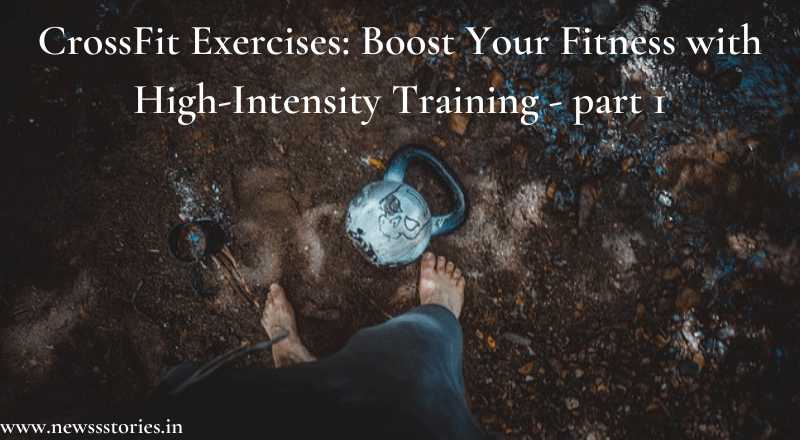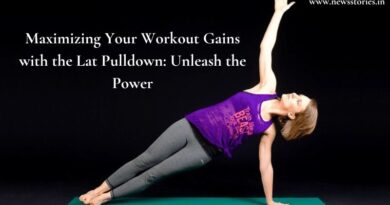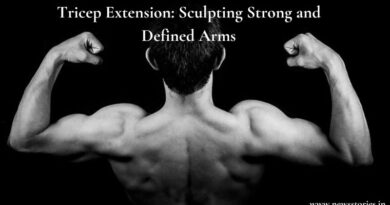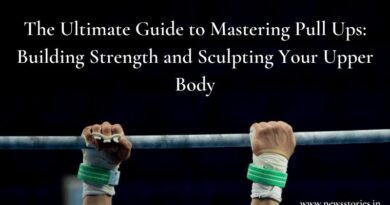CrossFit Exercises: Boost Your Fitness with High-Intensity Training – part 1
Introduction
Are you ready to increase your level of physical fitness. Look no further than CrossFit exercises. CrossFit has gained immense popularity in recent years due to its high-intensity workouts that deliver outstanding results.
In this article, we will explore the world of CrossFit exercises, delve into their benefits. And provide you with a comprehensive guide to getting started. So, tighten your shoelaces, put on your workout gear, and let’s dive into the world of CrossFit.
Table of Contents
What Are CrossFit Exercises?
The Origins of CrossFit
Benefits of CrossFit Training
Safety Precautions and Warm-Up
Essential Equipment for Crossfit Workouts
Crossfit Exercises for Beginners
Intermediate Crossfit Workouts
Advanced Crossfit Challenges
This is for Weight Loss
Crossfit Exercises for Muscle Building
Crossfit and Cardiovascular Fitness
Nutrition for Crossfit Athletes
Crossfit and Injury Prevention
Tracking Progress and Setting Goals
Incorporating Mobility and Flexibility Training
The Role of Rest and Recovery in Crossfit
CrossFit Exercises for Core Strength
Functional Movements in Crossfit
Mental Toughness
Endurance Athletes
Exercises for Older Adults
Crossfit and Pregnancy
Crossfit Exercises for Kids and Teens
Frequently Asked Questions (FAQs)
Can anyone do Crossfit exercises?
How often should I do Crossfit workouts?
Do I need to be in great shape to start Crossfit?
Can CrossFit help me lose weight?
Are CrossFit exercises suitable for Old Peoples
What if I have a pre-existing injury?
Conclusion
What Are CrossFit Exercises?

CrossFit exercises are a form of high-intensity functional training. That combines elements of weightlifting, cardiovascular exercises, and bodyweight movements.
The aim is to develop a well-rounded fitness level by focusing on strength, endurance, power, agility, speed, flexibility, and coordination. CrossFit workouts typically involve a wide range of exercises performed. At high intensity and can be tailored to the individual’s fitness level.
The Origins of CrossFit
CrossFit was founded in the early 2000s by Greg Glassman, a former gymnast and fitness enthusiast. It started as a grassroots fitness movement. And quickly gained traction, eventually evolving into a global phenomenon.
Glassman’s vision was to create a training program that would prepare individuals for any physical challenge. They might face in life, whether it be in sports, everyday activities, or emergency situations.
Benefits of CrossFit Training
CrossFit training offers a multitude of benefits that go beyond just physical fitness. Here are some of the key advantages of incorporating CrossFit into your workout routine.
Improved Strength: Crossfit exercises engage multiple muscle groups, leading to increased overall strength.
Enhanced Endurance: The high-intensity nature of Crossfit workouts helps improve cardiovascular endurance.
Increased Power and Speed: Crossfit incorporates explosive movements that enhance power and speed.
Boosted Agility and Coordination: The varied movements in Crossfit improve agility and coordination.
Enhanced Flexibility: Crossfit exercises often involve dynamic stretching, which can improve flexibility over time.
Efficient Workouts: Crossfit workouts are typically shorter in duration but highly effective in burning calories and building muscle.
Community Support: Crossfit fosters a sense of community and camaraderie among participants. Creating a supportive environment for achieving fitness goals.
Mental Toughness: Crossfit challenges push individuals to their limits, promoting mental resilience and discipline.
Safety Precautions and Warm-Up

As with any form of exercise, safety should be a top priority when engaging in CrossFit workouts. Here are some essential safety precautions to keep in mind.
Consult a Physician: If you have any underlying health conditions or concerns. It’s important to consult with a healthcare professional before starting CrossFit.
Proper Technique: Learn the proper technique for each exercise to minimize the risk of injury. Consider working with a certified Crossfit coach or trainer.
Gradual Progression: Start with beginner-friendly workouts and gradually increase the intensity as your fitness level improves.
Warm-Up: Always warm up before beginning a Crossfit workout. This helps prepare your muscles, joints, and cardiovascular system for the upcoming challenges.
Listen to Your Body: Pay attention to any signs of discomfort or pain during workouts. If something doesn’t feel right, take a break and seek guidance if needed.
Essent loping strength and mobility in various exercises.
Gymnastic Rings: Provide a challenging tool for bodyweight exercises and advanced movements.
Remember, these are just some examples of equipment commonly used in CrossFit workouts. The specific equipment needed may vary depending on the workout programming and individual preferences.
CrossFit Exercises for Beginners

If you’re new to CrossFit, it’s essential to start with beginner-friendly exercises to build a solid foundation. Here are some CrossFit exercises suitable for beginners:
Air Squats: A bodyweight squat variation that strengthens the lower body and improves mobility.
Push-Ups: This traditional workout works the triceps, shoulders and chest.
Ring Rows: An effective upper body pulling exercise using gymnastic rings or a suspension trainer.
Box Step-Ups: Step onto a box or platform, alternating legs to strengthen the lower body.
Plank: A core exercise that involves maintaining a stable position for a set duration.
Assisted Pull-Ups: Use resistance bands or an assisted pull-up machine to gradually build strength for unassisted pull-ups.
Burpees: A squat, plank, and leap exercise that works the entire body.
Remember to maintain proper form and focus on mastering the technique before progressing to more challenging exercises. It’s always better to start with lighter weights and gradually increase the intensity as you gain confidence and strength.
Intermediate CrossFit Workouts
Once you’ve built a solid foundation, you can progress to more intermediate-level CrossFit workouts. These workouts will challenge your strength, endurance, and mental toughness. Here are some intermediate CrossFit exercises.
Thrusters: Combines a front squat and overhead press, targeting the legs, shoulders, and core.
Toes-to-Bar: Hanging from a pull-up bar, bring your toes up to touch the bar, engaging the core muscles.
Wall Balls: A combination of a squat and a medicine ball throw against a wall, working the legs and shoulders.
Double-Unders: Jump rope exercise where the rope passes under your feet twice per jump, improving coordination and cardiovascular endurance.
Handstand Push-Ups: A challenging exercise that targets the shoulders, triceps, and core.
Pistols: Single-leg squats that require balance, stability, and strength.
Bar Muscle-Ups: A more advanced version of the pull-up that involves transitioning from below the bar to above it using a swinging motion.
These intermediate exercises require more skill and strength. so it’s important to continue focusing on proper technique and gradually increase the intensity.
Advanced CrossFit Challenges

For those looking to push their limits even further, advanced CrossFit exercises will provide the ultimate challenge. These exercises require a high level of strength, endurance, and skill. Here are some advanced CrossFit challenges to consider:
Snatch: A complex Olympic weightlifting movement that involves lifting. The barbell from the ground to an overhead position in one fluid motion.
Muscle-Ups: A combination of a pull-up and a dip, transitioning from hanging below the rings or bar to an upright support position.
Handstand Walk: Walking on your hands for a set distance or time, testing balance and shoulder stability.
Barbell Complexes: Performing a series of movements with a barbell without putting it down. Such as power cleans, front squats, and push presses.
Ring Dips: Dips performed on gymnastic rings, challenging stability and upper body strength.
Plyometric Box Jumps: Jumping onto a high box or platform explosively, testing power and coordination.
These advanced exercises should only be attempted by individuals with a solid foundation in CrossFit training. And proper supervision to ensure safety.al Equipment for CrossFit Workouts.
CrossFit workouts can be performed with minimal equipment or in a fully-equipped CrossFit gym. Here are some essential pieces of equipment.
Commonly used in CrossFit exercises
Barbells: Used for weightlifting exercises like deadlifts, squats, and overhead presses.
Bumper Plates: Designed to be dropped from overhead, these plates are used in Olympic weightlifting movements.
Kettlebells: Versatile weights that can be used for swings, cleans, snatches, and more.
Dumbbells: Useful for unilateral exercises, such as lunges and single-arm rows.
Pull-Up Bar: Essential for upper body pulling exercises like pull-ups and muscle-ups.
Jump Rope: Ideal for cardiovascular conditioning and double-unders.
Medicine Ball: Used for wall balls, rotational exercises, and core training.
Plyo Box: A sturdy platform for box jumps, step-ups, and other explosive movements.
Next Post Continues the benefits of CrossFit Exercise.
<< Previous Post
>> Next Post
https://newsstories.in/crossfit-exercises-boost-your-fitness-with-high-intensity-training-part-2/




